2010 Yamaha Lineup Preview
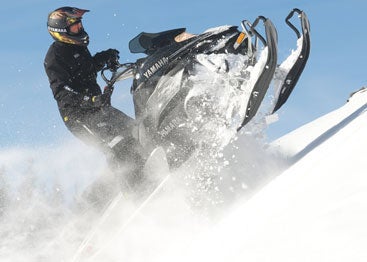
Deep snow Yamaha models get lighter, simpler and more interesting
Yamaha’s biggest issue, the added weight incurred with 4-stroke motors, gets met head-on in 2010 as the company adds greater deep snow capability by subtracting springs, bogie wheels and excess weight from its powder sleds. The big bump Nytro series gains the lighter ‘SE’ style chassis from last season and, as expected, the popular Vector series scores a major upgrade with an all-new fuel-injected triple.
If you have followed what’s gone on with Yamaha snowmobiles since the introduction of its 4-stroke RX-1 for 2003, you know that this global powersport player takes performance seriously. The company plays in a world of supersport road bikes, performance watercraft, technically advanced outboard motors and legendary snowmobiles ranging from the lightweight SRX of the 1970s to the Vmax-4 of the 1980s and now to a full line of 4-stroke sleds for on, off and way off trail capabilities.
Leading the charge for way off trail is an all-new Yamaha Nytro MTX series. These special edition ‘SE’ models have commonality except in track length where there is a 162-inch track length version and a shorter tracked 153 version. Both 2010 powder models will share Yamaha’s latest FXG2 front end, new construction aluminum tunnel, a sophisticated ProMountain Air rear suspension system, single-ply Camoplast track, revised approach angle for getting up on top of the snow quicker, and replaceable bearing wheels.
FXG2 Front End
The FXG2 front suspension is a mountain-specific design with 10 changes over the FXG1 setup that include new shorter A-arms with both a revised caster angle and a longer trail spindle. In typical Yamaha fashion, this design was extensively mountain-tested by the ‘mountain’ engineering team for the past few seasons. The suspension’s caster is more relaxed at 26 degrees versus last year’s MTX that featured 22 degrees of caster. The idea is to provide greater high-speed stability for deep powder players by keeping the sled’s steering consistently centered. The overall goal was to give the MTX SE models more predictability on the trail and when running full tilt up tracked hillsides. To assist in that control, Yamaha completes the new FXG2 front end with the addition of Fox Float 2 front shocks. These air adjustable shocks were specifically designed and tuned with input from Yamaha engineers.
While trail riders want the added side-to-side stability control of a quick-response sway bar, the device actually detracts from powder handling and Yamaha left it off, which shaves off more than three pounds of weight up front.
Less Weight
Where Yamaha really dropped weight was in the rear suspension. This is as mountain-specific as Yamaha can get. The all-new ProMountain Air design is simple, functional and lightened. The design concept follows in the footsteps of Holz Racing Products AlphaX and last year’s Arctic Cat M-series rear suspension. Yamaha saves weight going to a rather simple dual rail design that is curled up at the rear (similar to last year’s XTX). The ProMountain Air suspension literally drops a box full of weight (about 13.5-lbs) by exorcising torsion springs, control rods, and coil springs. Instead of coil spring assistance, this new design features Fox Racing Shox’ Float 2XV that has an extra capacity air cylinder and on-trail adjustability.
As the XTX was virtually all new last season, changes for 2010 are minimal but include the replaceable bearing wheels, revised grip warmers and two new graphics packages. Yamaha continues offering its Phazer RTX model to round out its ‘big bump’ segment for 2010.
Groomed Trail
Yamaha reflects the industry at large as it enters 2010 and positions its ‘trail’ models in what is the third largest industry segment. According to Yamaha surveys, these riders seek comfort and dependability as well as performance. These are your rider-forward comfort riders who spend most of their time traveling groomed trails. Yamaha enjoys a loyal following here as this rider looks to dependable power with good economy in both fuel and oil usage.
The key here is usable performance with a minimum of down time. This is Vector Country. By adding a fuel-injected Genesis 120FI motor to the 2010 version, Yamaha makes its Vector into one of the best all-around snowmobiles on the market. The larger displacement Genesis 120FI offers a six horsepower increase in usable power and much more consistent throttle response thanks to the electronically monitored Mikuni injection system.
With its significant under the hood upgrade, the Vector GT gains refinement in its MonoShock rear suspension, which adds 13 changes that make enough difference for Yamaha to now call it the MonoShock II suspension. You’ll still find the nifty, remote adjuster on the side of the tunnel for making quick trailside changes in the ride. Now, though, the MonoShock II features a larger rear axle, new track adjuster, stronger rails and needle bearings in the lower front arm.
Other than the engine and rear suspension upgrades, the 2010 Vector GT offers refinements in the grip warmers, a seat covering that absorbs less moisture and three graphics packages.
Groomed Trail Options
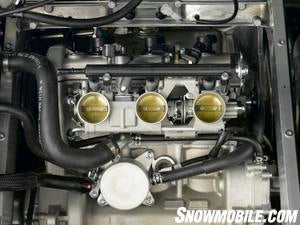 New Vector motor is larger, more powerful and smoother.
New Vector motor is larger, more powerful and smoother.
Specific 2010 groomed trail models also include an upgraded Apex GT with the new MonoShock II rear suspension and ‘clicker’ front suspension shocks. The base Apex, save new white/blue graphics, is essentially unchanged from this current season. Think of it as Yamaha’s ‘value’ trail performer. Like the value Apex, the 2010 Phazer GT continues as the budget trail sports sled from Yamaha. This 500cc, 80-hp lightweight model is it for groomed trail value for this season as the base Phazer has been discontinued.
For those riders who like to occasionally break off trail and enjoy the added ‘cush’ of a longer track set up, Yamaha continues to offer LTX ‘stretch’ versions of its 2010 Vector and Apex. The Vector LTX GT gets the same upgrades as the shorter-tracked GT version, which includes the new more powerful Genesis 120FI triple and evolved MonoShock II rear suspension. The Apex LTX GT comes with the MonoShock II design with electronically controlled Ohlins shocks on the rear skid. The ‘value-added’ Apex LTX features the MonoShock II skid with the manually adjustable set up. All of these LTX models use a 136-inch track under the Deltabox II rider-forward platform.
Touring Utility
Rounding out Yamaha for 2010 are three touring models: the virtually unchanged from 2009 Venture GT with the fuel-injected Genesis 120FI; a carbureted Venture on the older chassis; and the Phazer-based Venture Lite with 500cc twin and seating for two. For utility needs, Yamaha returns the Viking Professional with the base one-liter, carburetor-equipped Genesis 120 motor and underseat storage.
Like every other snowmobile manufacturer, Yamaha continues to focus on offering sporty snowmobiles for the heart of the snowmobile market, but seeks to differentiate its brand by offering incredibly durable and reliable 4-stroke powered sleds that are as quick and fast as its 2-stroke competitors. Look at its mountain models for 2010, Yamaha gains performance by dropping weight while retaining the power and responsiveness of its Genesis 130FI triple. Yamaha competes on every level with models reflecting broad power, lightweight aluminum chassis, ever-evolving suspension design and its continuing reputation for quality and durability. That’s a pretty good combination to bring into model year 2010.
Related Reading
2010 Yamaha Vector GT FI Review
2009 Yamaha Preview
Holz AlphaX Suspension



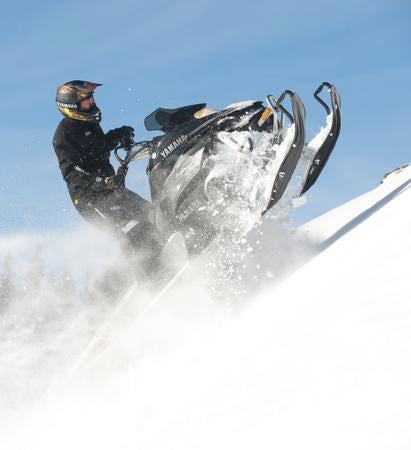
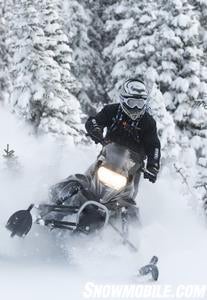
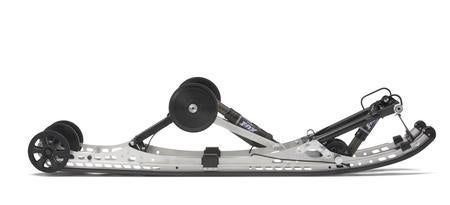
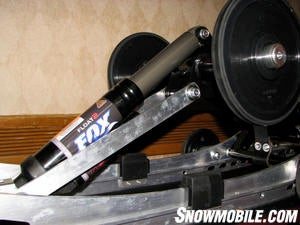
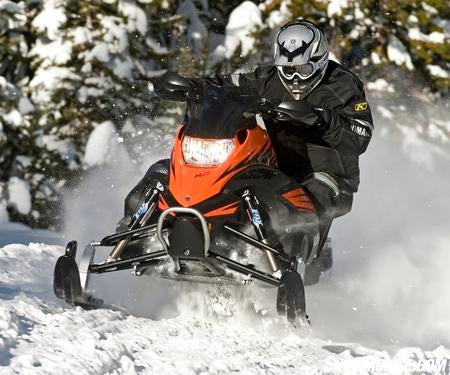
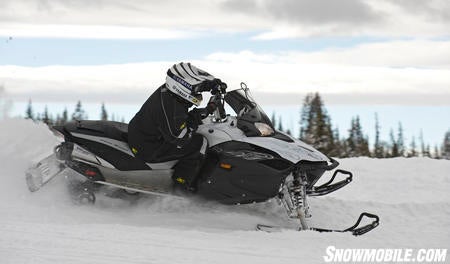





 Your Privacy Choices
Your Privacy Choices